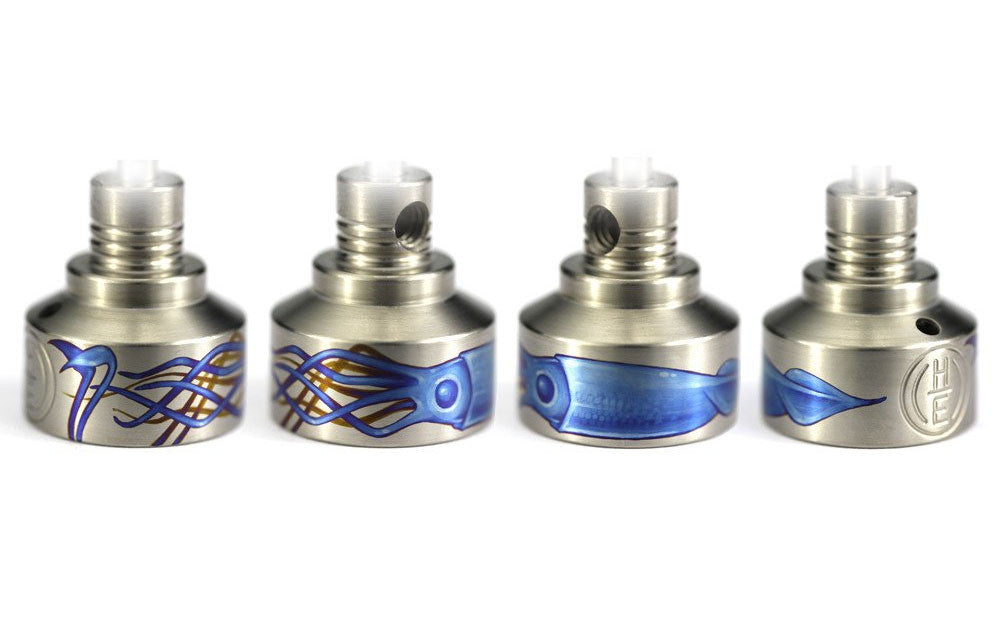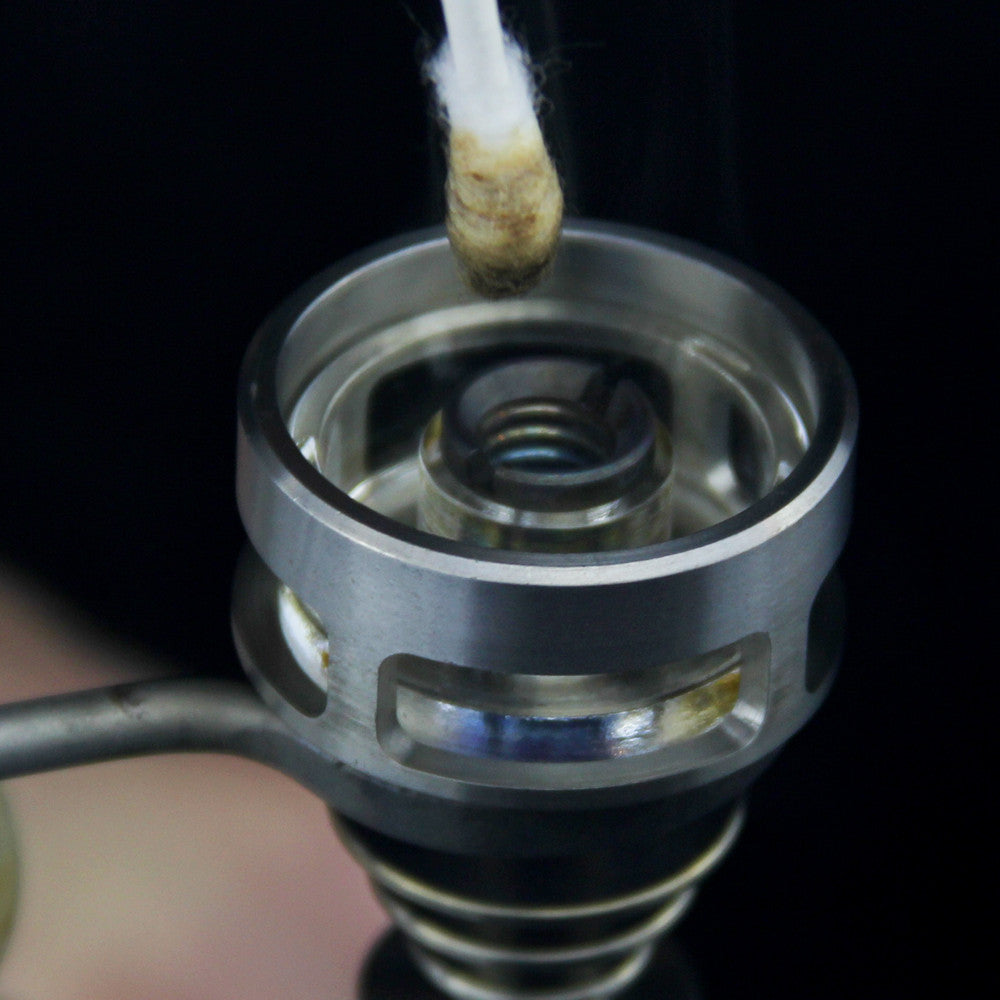
Quartz Maintenance - Devitrification Prevention
Over the past several years, the market has had a change of opinion on proper nail use and care. In the beginning it was believed that nails had to be "seasoned" or that a "season layer" had to be developed before a nail could be used optimally. Depending on who you talked to, the purpose and method of the "season layer" or "seasoning" varied. This is a far cry from the methods and techniques employed today which focus on keeping the surface of the material looking as close to "brand new" as possible as a clean surface is not only aesthetically pleasing to the eye but is arguably a better user experience.
For this article, instead of explaining how to clean quartz, it is important we first discuss how and why it gets dirty. Once we are familiar with how the quartz gets dirty, we can take steps to prevent it. For the sake of discussion we identify three types of "dirt" your quartz may encounter and we will be labeling them as: Surface Contaminants, Atmosphere, and Temperature. All of which lead to a phenomenon known in the glass world as devitrification.
We are going to start by talking about devitrification, or, "devit" as it is the result of the three "contaminants".

Devitrification: to deprive of glassy luster and transparency; especially : to change (as a glass) from a vitreous to a crystalline condition - Merriam Webster [1]
Wikipedia describes devitrification as "...the surface of the glass develops a whitish scum, crazing, or wrinkles instead of a smooth glossy shine, as the molecules in the glass change their structure into that of crystalline solids." [2]
As an amorphous solid, clear fused quartz's atomic structure is in a perpetual state of imbalance and devitrification is the act of the atoms reorganizing themselves into an orderly crystalline structure. Clear quartz is made transparent because the silicon and oxygen atoms in the material do not have enough time during the manufacturing process to rearrange themselves back into a crystalline structure before the molten material cools into a solid. [3]
Devitrifaction can be caused by several factors but the three we are going to focus on are: surface contaminants, atmosphere, and temperature.
Surface contaminants include anything that is on the quartz surface. This can include the obvious such as oil reclaim, and burnt carbon as well as some not so obvious contaminants which could include water, dust particles or oils present within the skin. Typically any alkaline compounds introduced onto the surface of the quartz will promote devitrification.[3] However, absent heat, a surface contaminant is usually not enough to cause devitrification. If a surface contaminant can be removed before torching the quartz, it can help prevent the devitrification. Many individuals have previously used water to clean their quartz but even water on the surface of the quartz may attract contaminants that, when dried, remain on the surface of the quartz and when reheated can promote devitrification. Surface contaminants accelerate devitrification, particularly alkaline compounds, salts, and vapors, and alkaline metals can generate devitrification at tens or hundreds of times the normal rate.[4]
Atmosphere also plays a role in the devitrification process. When manufacturing SiO2 (clear fused quartz), the material is placed in a partial vacuum. When it exits the vacuum it has an oxygen deficit. Oxygen assists the rearranging of the clear transparent SiO2 atoms into the white, chalky, crystalline devitrification we want to avoid. The atmosphere is oxygen rich, and with heat as a catalyst, the oxygen in the atmosphere can promote devitrification.[3] For example, usage at high temperatures for an extended duration or using a torch with added oxygen are two ways that increase devitrification.[4]
Temperature is the catalyst of devitrification. At room temperature, quartz is fairly stable. Atmosphere and surface contaminants are not much to worry about without the addition of increased temperature. The sources vary on the temperature at which devitrification occurs. Some say the phenomenon almost never occurs below 1,150°C (2102°F) as long as no surface contaminants are on the quartz while others say devitrifcation can happen at temperatures as low as 1,000°C (1,832°F). [3&4] It can even occur at temperatures well below 1,000°C if any surface contaminants are on the material. Devitrification in open atmosphere, absent surface contaminants, normally occurs at temperatures exceeding 1,200°C and accelerates with any temperature increase. [4] For reference, butane torches are claimed to develop flame temperatures of up to 1,430°C (2,610°F) [5] and propane torches can reach 1,995°C (3,623°F).[6]
So now that we know what devitrification is, and how it is caused, what steps can we take to avoid it?
1. Don't torch the quartz so much. My experience has been that the temperature at which a low temp dab is taken can range anywhere from 204°C-316°C (400°F-600°F). This temperature window is far below the 1,000°C (1,832°F) at which devitrification occurs. If your method of usage involves taking your material to a glowing red, perhaps it may be time to reinvent your method. If you use a propane torch, maybe consider switching to a butane one. Remember, contaminants can make the phenomenon occur at temperatures exceedingly below 1,000°C and this is why...
2. The Q-Tip tech got it right. In order to avoid devit you need to meticulously clean your quartz surface of any contaminant before each reheat. Using a cotton swab to soak up uncooked oil and wipe out condensed claim is an integral part of avoiding devit. In instances were oil has been burnt onto the surface, a cotton swab soaked in acetone can be used to attempt to scrub the surface clean of contaminants before attempting to reheat the quartz. Any surface contaminants you are able to remove before reheating the quartz will immensely help prevent future devit.
3. Avoid using basic water in conjunction with high temperatures (do not thermal shock). We now know that alkaline compounds can increase the devit process. Therefore basic water (especially alkaline water) should be avoided at all times. Deionized water, or distilled water, water with a pH of 7 is more ideal for cleaning purposes, but should still never be used in conjunction with high temperatures. While thermal shock might be a tempting fast and easy way to clean your quartz, the hidden cost is the stubborn devitrification and increased stress, which is suffered on a longer time line. Using unfiltered water can result in alkaline compounds being left on the surface which promote devit.
If we already suffer from devit, how do we get rid of it?
Most of the methods for removing devit involve either equipment or toxic chemicals which the general public will not have access to and someone who isn't skilled in handling such equipment or chemicals SHOULD NOT EVEN ATTEMPT DOING SO. But for the sake of education, we will discuss them here. One method is to cover the the affected area with a layer of clear quartz and refiring. Another is using a 10% hydrofluoric acid solution to wash the quartz for several minutes at room temperature followed by a series of rinses in deionized water and quickly drying. [4] But don't try that at home because...
"Hydrogen fluoride gas is an acute poison that may immediately and permanently damage lungs and the corneas of the eyes. Aqueous hydrofluoric acid is a contact-poison with the potential for deep, initially painless burns and ensuing tissue death. By interfering with body calcium metabolism, the concentrated acid may also cause systemic toxicity and eventual cardiac arrest and fatality, after contact with as little as 160 cm2 (25 square inches) of skin." [7]
Alternatively safer methods for removing devit include sandblasting the material or polishing the material with a pumice stone or rotary brush.[2] Some people in the industry offer this as a service. These methods of removal result in a new surface finish that some may deem as less desirable than the original transparent clear.
Put simply, devit is pretty tough to get rid of once it has occurred. It is best to take all the steps mentioned above to avoid suffering from it in the future.
Sources
1. Merriam Webster "Devitrify" (https://www.merriam-webster.com/dictionary/devitrify)
2. Wikipedia "Devitrification" (https://en.wikipedia.org/wiki/Devitrification)
3. Percision Glassblowing "Devitrification" (http://www.precisionglassblowing.com/technical-info/devitrification/)
4. CoorsTek "Handling Instructions for Quartz Glass Products" (http://www.coorstek.co.jp/eng/products/semicon/quartz/handling.html)
5. Wikipedia "Butane torch" (https://en.wikipedia.org/wiki/Butane_torch)
6. Wikipedia "Propane torch" (https://en.wikipedia.org/wiki/Propane_torch)
7. Wikipedia "Hydrofluoric acid" (https://en.wikipedia.org/wiki/Hydrofluoric_acid)


